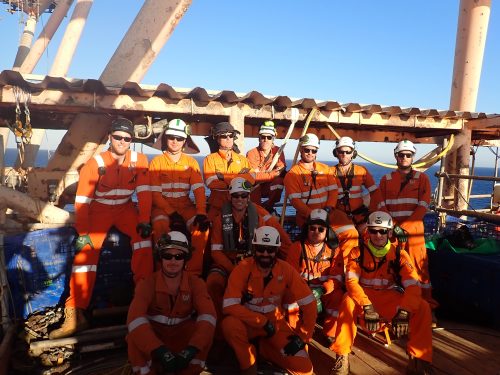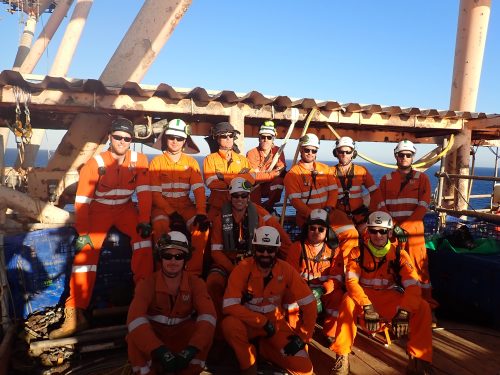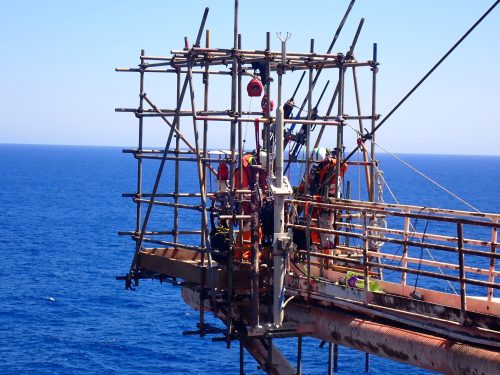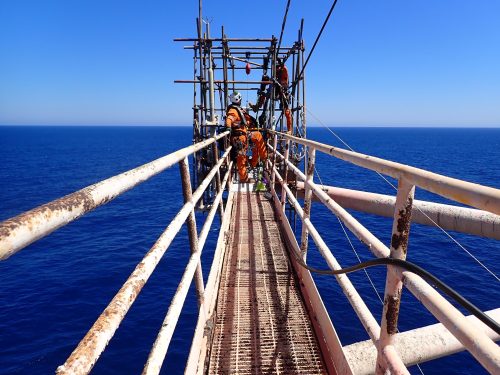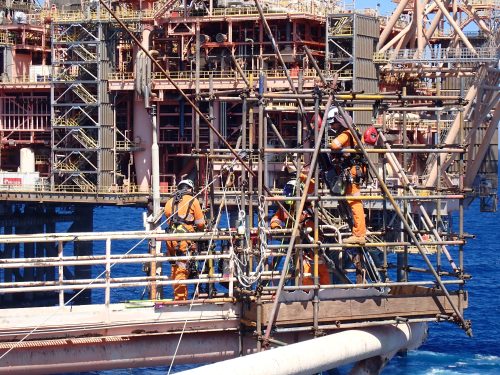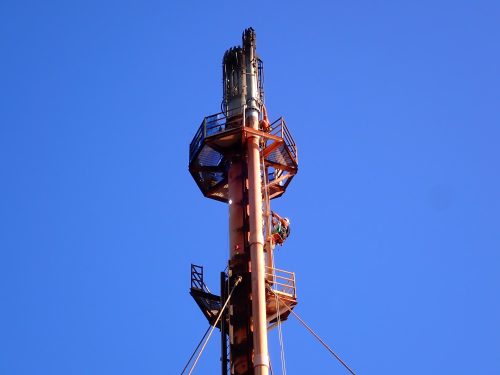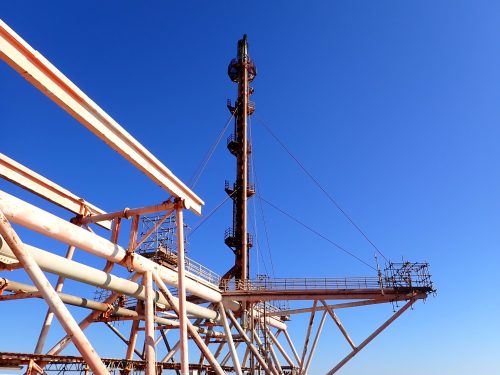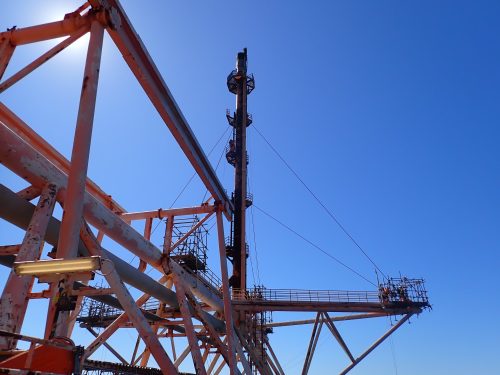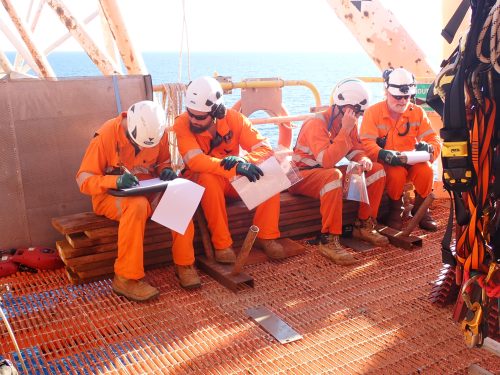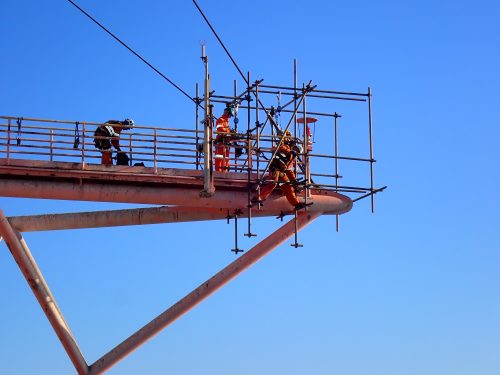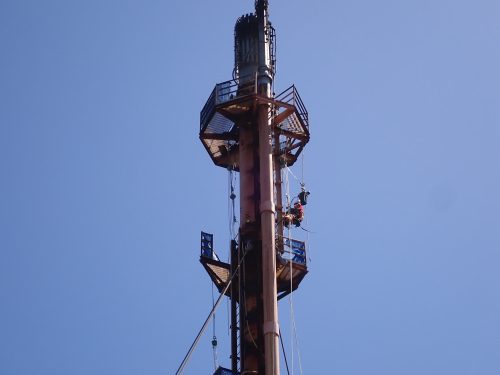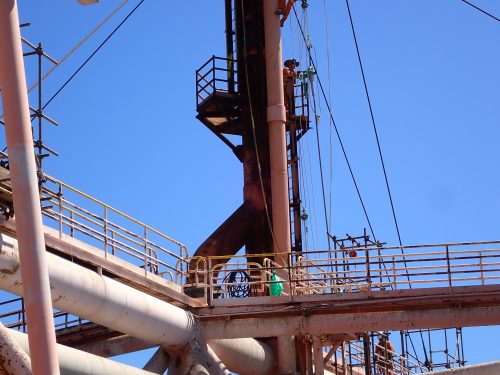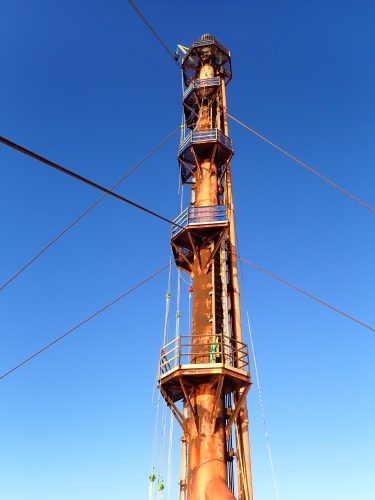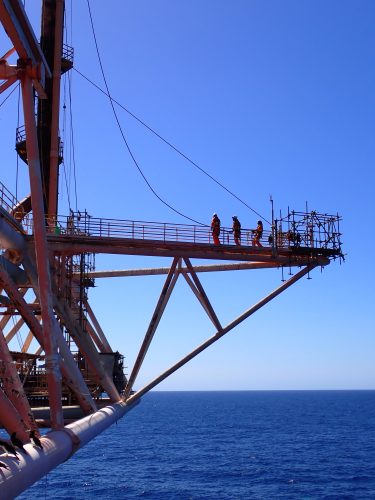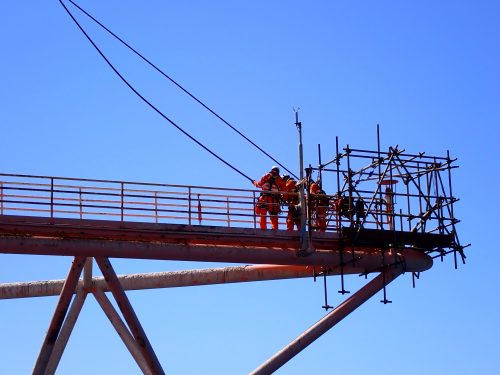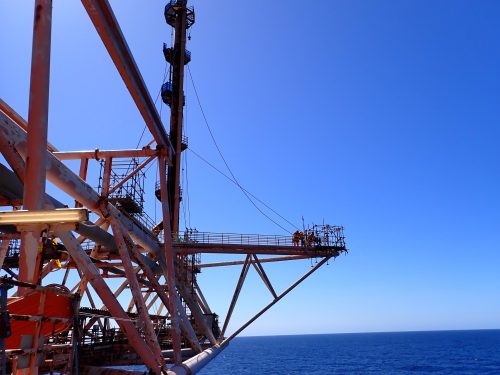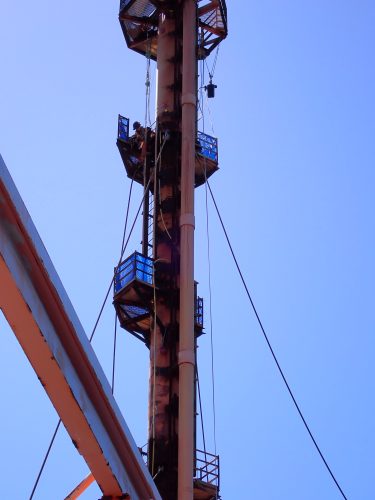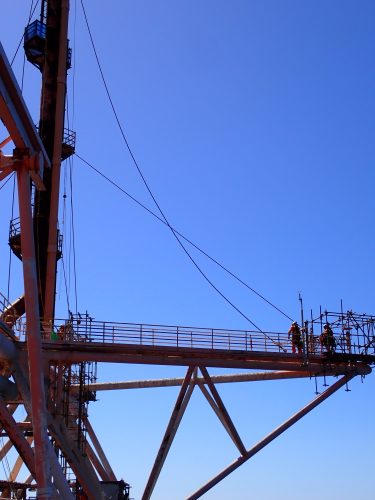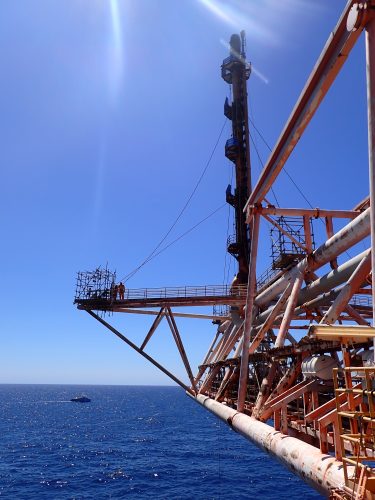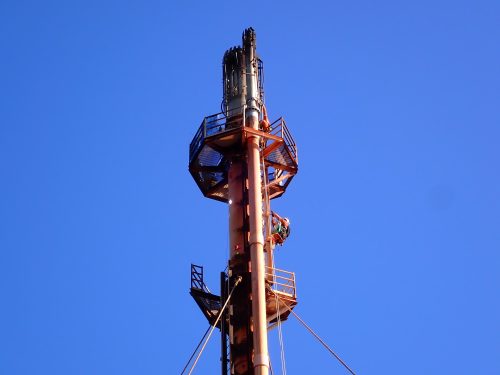The North Rankin Complex (NRC) Facility is located offshore of the Northwest Shelf of Australia and processes gas for transfer to the Karratha Gas Plant. The facility is made up of the North Rankin A & B Platforms (NRA & NRB) and has a Flare Bridge that supports the Flare Stack, High Pressure (HP), and Low Pressure (LP) piping. Personnel were only allowed on the flare stack when the flare was offline due to the risk of flare heat radiation. The guy wires on the Flare Stack were overdue for replacement, and a mobile crane could not be used for the work due to equipment unavailability.
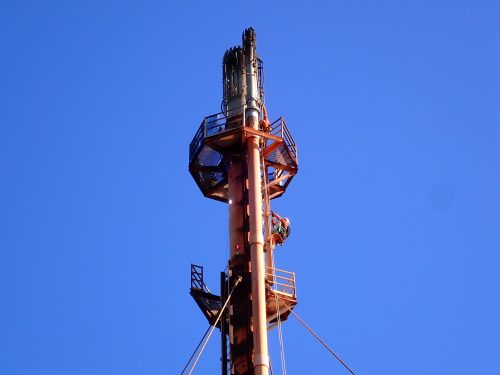
NRA Guy Wire Replacement
Background
The North Rankin Complex (NRC) Facility, comprising the North Rankin A & B Platforms (NRA & NRB), is located offshore of the Northwest Shelf of Australia at a nominal water depth of 124.3m. It processes gas for transfer to the Karratha Gas Plant.
NRA has an 184m long Flare Bridge, which supports the Flare Stack, High Pressure (HP), and Low Pressure (LP) piping to the flare stack, along with met-ocean instrumentation, radar, and flare knockout drums. The Flare Stack supports the HP and LP flare tips and is supported by eight guy wires. The complete flare assembly is approximately 36m high.
Due to the risk associated with flare heat radiation, personnel are only allowed on the flare stack when the flare is offline. Further, due to the flare stack’s corrosion of the platforms and stairways, rope access was to be used when working on the flare stack.
The guy wires are typically replaced every 10-15 years, but the current guy wires have been in service past this period. The last guy wire replacement was completed in 2006, with the work scope completed using a mobile crane mounted on a trolley that, in turn, was mounted on a pair of crane rails that run along the top of the flare bridge. The mobile trolley used then was no longer available, and the crane rails were no longer suitable for mounting a similar-sized trolley on the crane rails.
Phase 1: Guy Wire Replacement Study
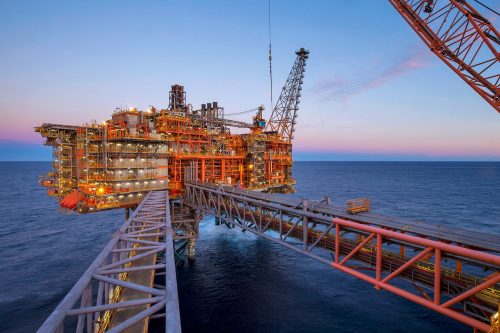
Woodside engaged Vertech Group to execute a study to replace the 8-guy wires of the flare tower On North Rankin Alpha using rope access within the 24-day “gas to gas” window of the 2023 turnaround.
The area was to be accessed using Rope Access Techniques, and a scaffold was erected to lay down areas and temporary barriers at various working areas.
Phase 2: Project Planning & Engineering
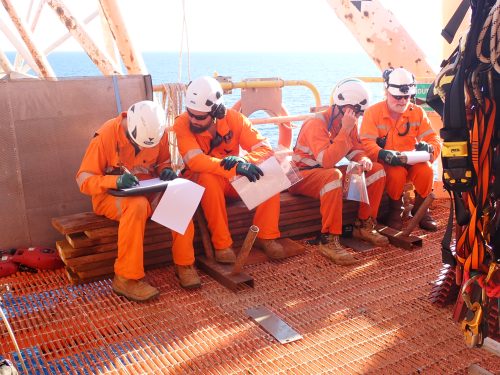
Working closely with the Woodside shutdown team and other specialist contractors such as Alliance Engineering, the Vertech project team provided the necessary deliverables, including a baseline project schedule, project execution POB profile an execution schedule, detailed and comprehensive implementation work packs, work method statement(s) for our site teams, an implementation bill of materials, lift Plans, detailed tensioning procedures and Vertech completed an onshore work method trial.
Phase 3: Pre-Shutdown Work
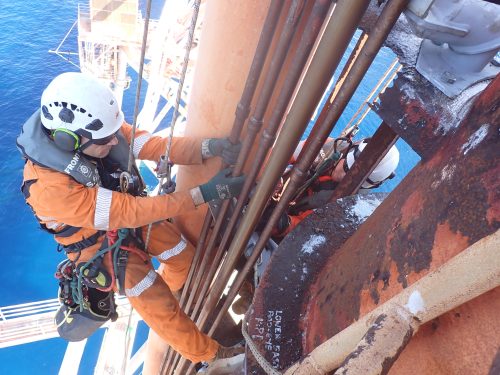
The Guy wire replacement is a complex and critical path task. As such, detailed close visual inspection, load testing and NDT were required once the flare was fully blown down and isolated before the installation of any rigging equipment. Once completed, the team installed all the initial rigging arrangements, inertia reels, rope access equipment, davits, air hoses and pig receivers and established dropped object protection.
It was necessary to complete fabric maintenance on some regions of the flare stack and pilot line pipe support, remove several potentials dropped objects, and then de-rig all materials before moving into the detailed sequence of guy wire replacement and tensioning for each wire.
Phase 4: Guy Wire Replacement
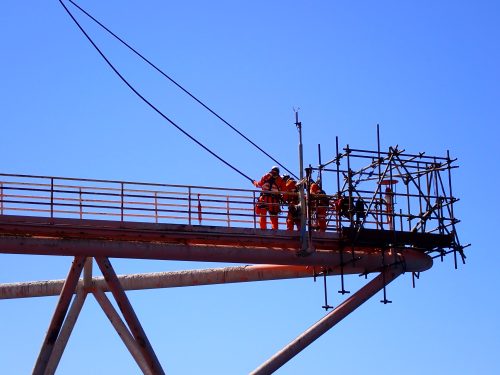
The Guy wire replacement is a complex and critical path task. As such, detailed close visual inspection, load testing and NDT were required once the flare was fully blown down and isolated before the installation of any rigging equipment. Once completed, the team installed all the initial rigging arrangements, inertia reels, rope access equipment, davits, air hoses and pig receivers and established dropped object protection.
It was necessary to complete fabric maintenance on some regions of the flare stack and pilot line pipe support, remove several potentials dropped objects, and then de-rig all materials before moving into the detailed sequence of guy wire replacement and tensioning for each wire.
Client Testimonial
“The scope was completed over a 4-week period involving significant coordination with rigging, scaffolding, and rope access. Not only was the job completed efficiently and without any incident, but the team also found improvements and adapted along the way. An outstanding team effort…”
- NRA HSEC
Want to know more? Contact us below:
"*" indicates required fields

